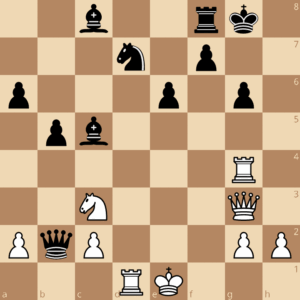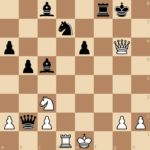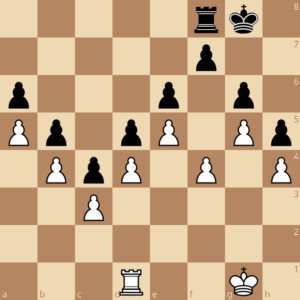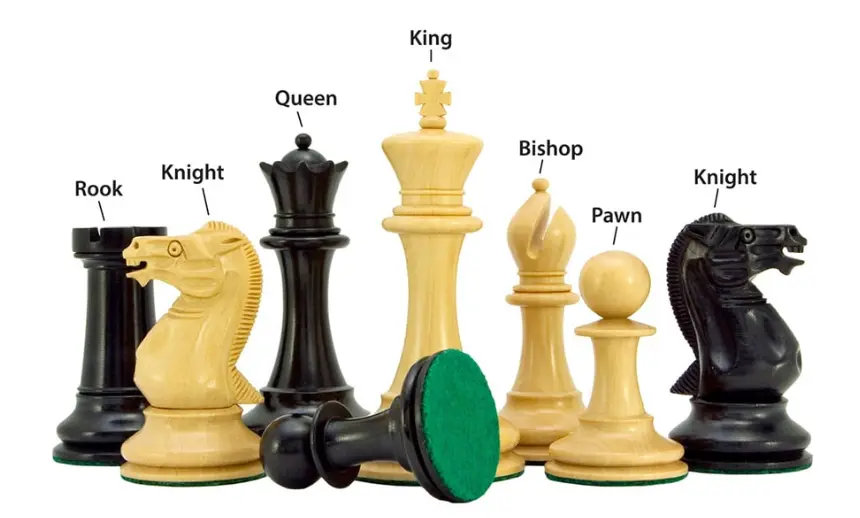A three-way chess game can lead to a draw. They are discussed below.
- Stalemate
If a situation occurs in the game when one of the sides has no more valid moves, but also has no check on his king, the situation is called a stalemate. The game was then declared a draw. Stalemates play a very important role in the endgame. Here are some examples of Stalemates, which often occur late in the game:
 In this picture, White is trying to advance his B-file pawn one square to queen, so that Black can checkmate. But now at this position, black’s rook and black’s king have nowhere to go. Because the black king will check in any room he goes to. Again, there is no other move on the board in this position. Since the black king has no room to move to and now has no checks on him, this position is called a stalemate.
In this picture, White is trying to advance his B-file pawn one square to queen, so that Black can checkmate. But now at this position, black’s rook and black’s king have nowhere to go. Because the black king will check in any room he goes to. Again, there is no other move on the board in this position. Since the black king has no room to move to and now has no checks on him, this position is called a stalemate.

You see in this picture, again the move of the black team. Since the black king has no safe square to move and also there are no checks on it, the game is now a stalemate, i.e. a draw, even though white has two pieces more.
 In this picture, the black team has made a blunder. To checkmate the white team, the black queen has moved into a room, which leaves the white king unchecked and all the rooms he can move to are blocked. As a result, the game became a stalemate once again.
In this picture, the black team has made a blunder. To checkmate the white team, the black queen has moved into a room, which leaves the white king unchecked and all the rooms he can move to are blocked. As a result, the game became a stalemate once again.
- Perpetual Check
Many times in the game one team may attack, but that attack may not be strong enough to checkmate. From there the possibility of paying one check after another may arise. That is, one team will continue to check to the other team and the other team’s king will not be able to move to any room that is free of check. If such a situation occurs, the game is declared a draw.

In this picture, you can see a certain position of a game between two British chess players, William Watson (white team) and Julian Hodgson (black team). The white team is attacking the game but is not able to make much of an advantage. Some of the moves of the game are shown below—
1) Rxg6+ fxg6
2) Qxg6+ Kh8
3) Qh6+ Kg8
4) Qg6+
 As it turns out, White is checking one after the other and can check as many times as he wants, but this will not make Black checkmate. As a result, the game became a draw. The latest state position of the game was like this picture.
As it turns out, White is checking one after the other and can check as many times as he wants, but this will not make Black checkmate. As a result, the game became a draw. The latest state position of the game was like this picture.
- Draw by compromise
At any stage of the game, either team can offer the other team to draw the game. The other team can then accept the offer if they wish, or decide to continue playing. You need to know how to properly propose a draw. You can say to your opponent, ‘We can end the game as a draw.’ This is a rule of chess that you all should follow. Most of the time when a draw is offered, the opponent accepts it. This is because a draw is usually offered when neither team has any chance of winning the game.
 Here is a position in which a draw is usually announced.
Here is a position in which a draw is usually announced.
Both teams have the same knuckleball and both teams are in very good positions. Neither side should face any complications from here. If play continues, the two teams can do nothing more than aimlessly move the pieces from room to room. As a result, it is better to accept this game as a draw and start a new game.
Even though a team has one or more pieces, the game may be drawn by a stalemate. As you can see in this picture, the white elephant cannot go anywhere else. Because, by doing so, the white king will be checked by the black boat. Also, the white king cannot move to another room to accommodate the black king. As a result, now that White has made a move, the game is a stalemate, i.e. a draw.
What you need to know:
- A stalemate occurs when a team has no legal moves, but also no checks on that team’s king.
- Occasionally, one team may have an opportunity to check with the other in succession, but not to checkmate. If that team decides to keep checking one after the other, the game becomes a draw.
- At any stage of the game, you can offer the opponent to draw the game. If the opponent so accepts, the method of drawing shall be called ‘draw by mutual agreement’.


